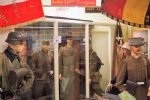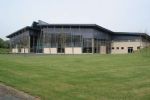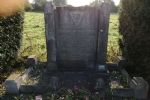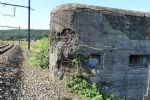Bunker d'Hitler
Adresse : Place Saint-Meen, 5660 Couvin, Belgique Téléphone : +32 60 34 01 40 Un peu à l'extérieur du village se trouve l'Abri d'Hitler qui fut le poste fortifié que s'était fait construire Adolf Hitler pour conduire la campagne de France du 6 juin au 4 juillet 1940. Un musée de la résistance y a été adjoint. En bordure de la RN 964, en face de la route qui mène au village du Brûly, la Chapelle du Maquis, dessinée par l'architecte Roger Bastin (originaire de Couvin) célèbre le souvenir des 47 résistants du Groupe D du Service de Sabotage Hotton cachés dans les forêts environnantes et victimes de la guerre. Deux cents hommes investissent le hameau le 24 mai 1940. Ils bâtissent deux chalets, deux bunkers, une rotonde, une pièce d'eau, remplacent le clocher de l'église par un réservoir d'eau pour constituer un GQG (Grand quartier général). Le 6 juin 1940 vers 13 heures 30, Adolf Hitler arrive à son nouveau quartier général. Aussitôt, il le nomme le 'Wolfsschlucht' (Ravin des loups). Pendant 22 jours, du 6 au 28 juin, Adolf Hitler installe son grand quartier général. Le 17 juin 1940, Hitler apprend la teneur du discours résigné du Maréchal Pétain. C'est dans l'église du Brûly-de-Pesche qu'est rédigé l'acte de capitulation de la France. Hitler le corrige le 20 juin. Le 21, il accomplit un aller-retour rapide à Rethondes, laissant l'armistice se conclure. Vers 20 heures, il est de retour. Les trompettes sonnent le signal « Halte » partout le 25 juin à 1 heure 35. C'est la fin des combats. Le 28 juin 1940, le séjour d'Hitler au Brûly-de-Pesche prend fin. Il décolle à 7 heure 30 pour Strasbourg avant de se rendre dans son nouveau GQG, le Tannenberg en Forêt-Noire. Durant la présence allemande dans le village (du 28 mai au 29 juin), les habitants de plus de vingt villages environnants durent quitter leurs habitations et furent évacués de force par l'occupant allemand. Source Wikipedia






